Poetry can be intimidating to teach, but it doesn’t have to be. You don’t have to be a poet or a savant. You simply have to give your students access to an array of poetry and the guidance to closely examine and analyze each poet’s craft…their artful use of poetic devices. It’s certainly important to teach writing explicitly, but one of the most powerful ways I’ve reinforced poetry instruction within my classroom is through the use of my Poetry Centers. These centers address beautiful words, sensory words, onomatopoeia, personification, visualizing, idioms, similes, metaphors, alliteration, literal and non-literal language, idea generation, word choice, feelings, buddy reading, word textures (whether a word is bumpy, smooth, or sharp), stanzas, the speaker, point of view, theme, phrasing, accuracy, expression, rate, line breaks, repeated lines, rhyming words, rhyme schemes, building a poem, making connections, recording poetry (for speaking skills), and listening to poetry (for listening skills). After our big whole group lessons, this is a great way to allow my students time to process everything, dig deeper, and reflect on what we have already learned. It’s a chance to practice in a low-stress, engaging way, and it always yields fantastic results.
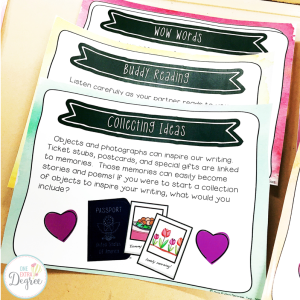

The direction sheets very clearly lay out what they are to focus on one with clear examples and expectations. They read poetry and then fill out a recording sheet for each center like the one below that addressed visualizing with a buddy. The kids take turns reading to each other, choose favorite lines, and illustratedtheir mental images. This is easy to differentiate as you can see below.
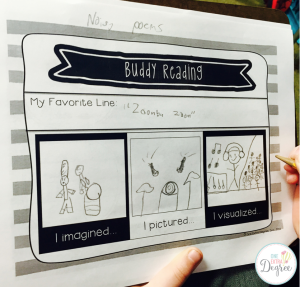
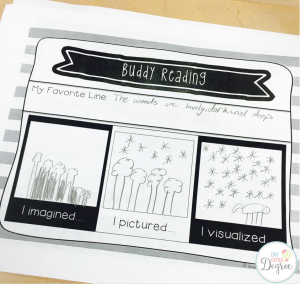
I also love how easy this is to customize. You can choose to differentiate and color code texts for your students to use. So, you can have blue, pink, and green groups, for example, and you can put the texts in color-coded baskets or run them on colored paper. You may choose to utilize a poem that corresponds with a narrative or informational text you’ve been working on in class, or you could incorporate a poem that addresses another content area. The possibilities are endless. Sometimes I hand-pick the poems. Other times, I stick poetry collections in each selection, and I let my students select their own texts from previously read decodable texts or close reading passages. I am a BIG proponent of student choice because I believe our kids can do more than we give them credit for, and they tend to work harder when they are invested in the topic. This time around, I let my students self-select poems, and it went beautifully. (That said, if this is something you’re interested in, I do make a few recommendations in the file as a starting point.)

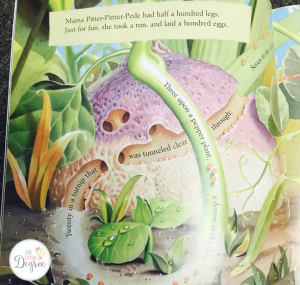
The centers are so easy to put together. All you need are the direction sheets, texts, and a recording sheet. It’s so quick and simple to implement! I am always a HUGE fan of simplicity and time-efficient resources. Instructional time is precious, and so is my prep time. All I have to do is run a few copies prior to the lesson, and I’m ready. If you color-code texts or run off specific poems, it’s easy to file them away with the direction sheets in a ziplock back or file for the next year. LOVE!


We started with the most basic center cards this week. For example, my students read and selected WOW Words from their text. These are words that are precise, new, fun to say, or just plain awe-inspiring. Overall, my students chose wonderful Tier II words, and they were articulate about their thoughts. I love how this reader really thought about the meaning of each term and how the words carried weight. Other responses addressed things like syllables contributing to the meter of the poem, creating rhymes, conveying emotion, and serving alliterative purposes. I was one happy teacher!
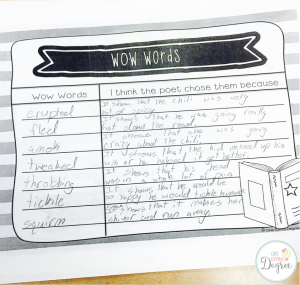
If you’re looking for something engaging to foster critical thinking and a deeper understanding of poetry, this is such a powerful way to do it! Happy Teaching!

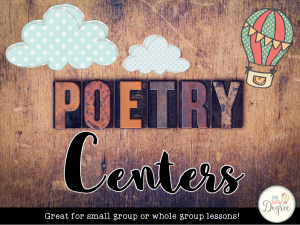

Leave a Reply